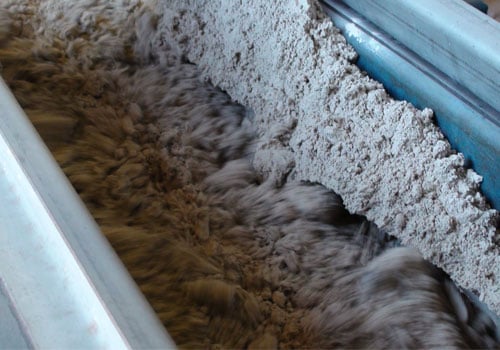When considering an industrial agglomeration solution for a material, most focus is placed on what agglomeration process and equipment will yield the greatest final product. While these are vital primary considerations, an equally important concern should be how to pre-condition a material for the desired agglomeration process. Pre-conditioning is essential, because it prepares material for other processing steps, and in doing so, assists in creating the best final product possible.
Pre-Conditioning Benefits
Many different materials benefit from pre-conditioning, even material that does not undergo agglomeration. Besides creating an optimal final product, pre-conditioning provides the following advantages to the pelletizing plant:
Easier Processing and Handling
Each step in the agglomeration process works to make the next step easier. Pre-conditioned material provides an early advantage to the entire process, resulting in easier handling for all subsequent steps.
Improved Product Control
Pre-conditioned material enhances size control and the ability to create a uniform product. In fact, numerous issues can be avoided by gaining greater control of the overall size of the material. For example, size control can reduce excessive recycle of small (unders) or large (overs) pellets. This improved control ultimately results in a better final product.
Increased Production
By creating an easy to handle material, pre-conditioning creates a consistent feedstock, permitting increased production rates versus an unconditioned material.
Pre-Conditioning Equipment
Once the final product result is determined, the required level of pre-conditioning should be evaluated in order to ensure a material will achieve the desired results. In addition to being able to test and define the type of pre-conditioning required, FEECO manufactures a variety of equipment that provides pre-conditioning benefits.
Rotary Dryer
Rotary dryers reduce moisture in a material using a rotating drum with customized lifting flights. As material travels down the drum, it cascades off the flights and comes in direct contact with a heated air stream and effectively dries the material. Because moisture is critical to the agglomeration process, material at or near its critical moisture requires drying before being agglomerated. Using a rotary drum to reduce moisture allows for the addition of a binder and improves the desired tackiness necessary for pellet growth.
Paddle Mixer
Paddle mixers, also called ‘pug mixers’, use paddles to create a kneading and shear action as material travels through its barrel-shaped trough. These mixers provide pre-conditioning benefits such as wetting, standard mixing, granulating, and back mixing dried material (recycle) into the process.
Pin Mixer
Pin mixers use pins mounted on a rotor shaft to deliver pre-conditioning benefits such as standard mixing, granulating, and back mixing dried material into the process. As the pins rotate at a high velocity, the turbulent agitation forces imparted on the material also deliver densification. The use of a pin mixer as a pre-conditioning method is especially common in the limestone soil amendment industry.
The best way to determine the necessary level of pre-conditioning for a material is to work with an experienced, full-solutions provider. FEECO has been providing pre-conditioning solutions to customers for over six decades. With a wide range of experience and the ability to blend knowledge between industries, we have the expertise to create the best process for your material from start to finish. For more information on pre-conditioning a material, contact us today!



